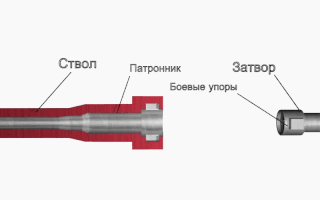Erectile dysfunction (ED), also referred to as impotence, is a form of sexual dysfunction in males characterized by the persistent or recurring inability to achieve or maintain a penile erection with sufficient rigidity and duration for satisfactory sexual activity. It is the most common sexual problem in males and can cause psychological distress due to its impact on self-image and sexual relationships. Majority of ED cases are attributed to physical risk factors and predictive factors. These factors can be categorized as vascular, neurological, local penile, hormonal, and drug-induced. Notable predictors of ED include aging, cardiovascular disease, diabetes mellitus, high blood pressure, obesity, abnormal lipid levels in the blood, hypogonadism, smoking, depression, and medication use. Approximately 10% of cases are linked to psychosocial factors, encompassing conditions like depression, stress, and problems within relationships.
An aphrodisiac is a substance alleged to increase libido, sexual desire, sexual attraction, sexual pleasure, or sexual behavior. These substances range from a variety of plants, spices and foods to synthetic chemicals. Natural aphrodisiacs like cannabis or cocaine are classified into plant-based and non-plant-based substances. Synthetic aphrodisiacs include MDMA and methamphetamine. Aphrodisiacs can be classified by their type of effects. Aphrodisiacs that contain hallucinogenic properties like bufotenin have psychological effects on a person that can increase sexual desire and sexual pleasure. Aphrodisiacs that have smooth muscle relaxing properties like yohimbine have physiological effects on a person that can affect hormone levels and increase blood flow.
Squib or Squibb may refer to:

Vaginismus is a condition in which involuntary muscle spasm interferes with vaginal intercourse or other penetration of the vagina. This often results in pain with attempts at sex. Often it begins when vaginal intercourse is first attempted.
Anorgasmia is a type of sexual dysfunction in which a person cannot achieve orgasm despite adequate stimulation. Anorgasmia is far more common in females than in males and is especially rare in younger men. The problem is greater in women who are post-menopausal. In males, it is most closely associated with delayed ejaculation. Anorgasmia can often cause sexual frustration.
Hypoactive sexual desire disorder (HSDD), hyposexuality or inhibited sexual desire (ISD) is sometimes considered a sexual dysfunction, and is characterized as a lack or absence of sexual fantasies and desire for sexual activity, as judged by a clinician. For this to be regarded as a disorder, it must cause marked distress or interpersonal difficulties and not be better accounted for by another mental disorder, a drug, or some other medical condition. A person with ISD will not start, or respond to their partner's desire for, sexual activity. HSDD affects approximately 10% of all pre-menopausal women in the United States, or about 6 million women.
Sexual dysfunction is difficulty experienced by an individual or partners during any stage of normal sexual activity, including physical pleasure, desire, preference, arousal, or orgasm. The World Health Organization defines sexual dysfunction as a "person's inability to participate in a sexual relationship as they would wish". This definition is broad and is subject to many interpretations. A diagnosis of sexual dysfunction under the DSM-5 requires a person to feel extreme distress and interpersonal strain for a minimum of six months. Sexual dysfunction can have a profound impact on an individual's perceived quality of sexual life. The term sexual disorder may not only refer to physical sexual dysfunction, but to paraphilias as well; this is sometimes termed disorder of sexual preference.
Ed, ed or ED may refer to:
Dysfunction can refer to:
A sexual disorder is a type of medical condition which may refer to:
Sex therapy is a therapeutic strategy for the improvement of sexual function and treatment of sexual dysfunction. This includes dysfunctions such as premature ejaculation and delayed ejaculation, erectile dysfunction, lack of sexual interest or arousal, and painful sex ; as well as problems imposed by atypical sexual interests (paraphilias), gender dysphoria, highly overactive libido or hypersexuality, a lack of sexual confidence, and recovering from sexual abuse ; and also includes sexual issues related to aging, illness, or disability.
Sexual medicine or psychosexual medicine as defined by Masters and Johnsons in their classic Textbook of Sexual Medicine, is "that branch of medicine that focuses on the evaluation and treatment of sexual disorders, which have a high prevalence rate." Examples of disorders treated with sexual medicine are erectile dysfunction, hypogonadism, and prostate cancer. Sexual medicine often uses a multidisciplinary approach involving physicians, mental health professionals, social workers, and sex therapists. Sexual medicine physicians often approach treatment with medicine and surgery, while sex therapists often focus on behavioral treatments.
Female sexual arousal disorder (FSAD) is a disorder characterized by a persistent or recurrent inability to attain sexual arousal or to maintain arousal until the completion of a sexual activity. The diagnosis can also refer to an inadequate lubrication-swelling response normally present during arousal and sexual activity. The condition should be distinguished from a general loss of interest in sexual activity and from other sexual dysfunctions, such as the orgasmic disorder (anorgasmia) and hypoactive sexual desire disorder, which is characterized as a lack or absence of sexual fantasies and desire for sexual activity for some period of time.

In breechloading firearms, an extractor is an action component that serves to remove spent casings of previously fired cartridges from the chamber, in order to vacate the chamber for loading a fresh round of ammunition.

A slamfire is a discharge of a firearm occurring as a cartridge is being loaded into the chamber. Some firearms are designed to slamfire, but the term also describes a malfunction of self-loading firearms. Shooters accustomed to firearms requiring trigger activation for discharge may be unprepared for a slamfire discharge.
Sex and drugs date back to ancient humans and have been interlocked throughout human history. Both legal and illegal, the consumption of drugs and their effects on the human body encompasses all aspects of sex, including desire, performance, pleasure, conception, gestation, and disease.
A firearm malfunction is the failure of a firearm to operate as intended for causes other than user error. Malfunctions range from temporary and relatively safe situations, such as a casing that did not eject, to potentially dangerous occurrences that may permanently damage the gun and cause injury or death. Improper handling of certain types of malfunctions can be very dangerous. Following gun safety rules can prevent firearm malfunctions, and limit the damage inflicted by them if they do occur. Proper cleaning and maintenance of a firearm play a big role in preventing malfunctions.

Firearm maintenance is a series of routine preventive maintenance procedures aiming to ensure the proper function of a firearm, often with the use of a variety of specialized tools and chemical solutions. Typically such maintenance is performed by the firearm owner using either simple methods such as cleaning the firearm with oil or other cleaning solutions or more sophisticated practices such as lubricating moving parts with oil/grease and recoating exposed surfaces with protective finishes such as varnishing or bluing.

The Boeing Pad Abort Test was a test of the Boeing CST-100 Starliner and its abort motors, conducted by Boeing as part of NASA's Commercial Crew Program. It was the first flight of Starliner and one of the last milestones ahead of OFT. The mission's main objective was to demonstrate that Starliner could safely pull a crew away from the pad in the event of an emergency prior to liftoff.




